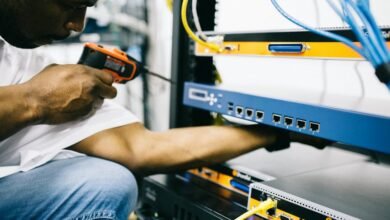Network Privacy and Oversight Delta: 9253195571, 8443717272, 7067319002, 8557581601, 7274778050, 3179395243

In a world where personal data and organizational integrity often clash, understanding network privacy becomes crucial. You must navigate the complexities of digital security while ensuring compliance with regulatory frameworks. As threats evolve, the strategies you employ to protect sensitive information can significantly impact user trust. What emerging trends and best practices are shaping the future of network oversight, and how can you adapt to safeguard your data effectively?
Understanding Network Privacy: Key Concepts and Definitions
Network privacy encompasses a range of concepts that are critical for safeguarding personal and organizational data in an increasingly connected world.
You must understand data encryption, which protects information by transforming it into unreadable formats, ensuring only authorized users can access it.
Additionally, user consent plays a vital role, as individuals should have control over their data and how it’s utilized or shared.
The Role of Regulatory Frameworks in Protecting Personal Data
As digital interactions proliferate, regulatory frameworks play a crucial role in safeguarding personal data from misuse and ensuring accountability among organizations.
You must prioritize regulatory compliance to foster trust and transparency. Strong data protection laws empower individuals, providing them with rights to control their information.
Best Practices for Individuals and Organizations in Safeguarding Privacy
While individuals and organizations can implement various methods to protect privacy, adopting best practices is essential for mitigating risks.
Utilize data encryption to secure sensitive information and ensure that all communications remain confidential.
Enhance user awareness through regular training on privacy policies and potential threats.
Emerging Trends and Challenges in Network Oversight and Security
Recent advancements in technology and the increasing complexity of cyber threats are reshaping how organizations approach network oversight and security.
You must address network vulnerabilities by implementing robust security protocols. As attackers evolve, traditional defenses may fall short.
Embracing adaptive security strategies and continuous monitoring is essential to protect assets and ensure privacy, allowing you to maintain control over your network environment.
Conclusion
In today’s digital jungle, safeguarding your data is as crucial as locking your front door—yet many leave it wide open. By embracing robust security measures and staying informed about regulatory frameworks, you’re not just protecting yourself; you’re building a fortress against cyber threats. As technology evolves, so must your defenses. Don’t wait for a breach to realize the stakes; take action now, because in this realm, ignorance isn’t just risky—it’s downright reckless.




